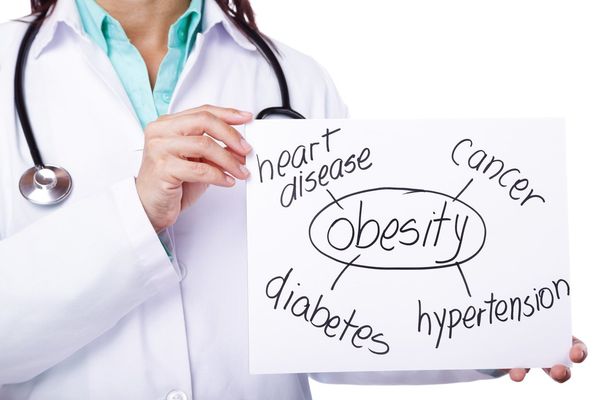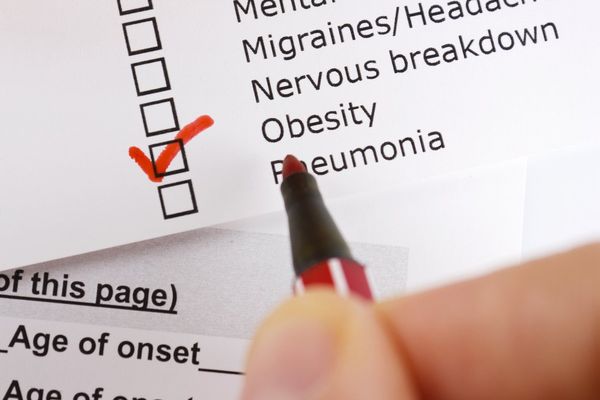While her infant daughter fought a neurological disorder in the hospital, Gabrielle Blawas fought a battle in her own head, sitting in her car in a fast-food parking lot. Fear for her daughter’s health steered Blawas straight to the fast-food restaurant after each hospital visit, where she ordered two full meals and ate them alone in her car. The food provided physical and emotional comfort that was all too temporary, morphing into shame, guilt and what Blawas called a food coma.
As a child, Blawas lost her father to a terminal illness and watched her mother withdraw into a deep depression. “We had a beautiful life, and then this illness hit him like a truck,” Blawas said. “I wasn’t able to deal with the pain. I wasn’t taught to deal with pain.” So Blawas escaped the pain by sneaking out and partying. “I took the rebel path. I turned to all the things you aren’t supposed to do.”
Years later, with her baby daughter facing an uncertain diagnosis, Blawas turned to a new, secretive way of coping with pain: binge eating. “I was a mom. I was married and had put my partying ways behind me. But food is the most acceptable drug,” Blawas said. She ate all day, hiding the evidence of her binges from her husband, family and friends.
Blawas’s daughter was 2 years old when her neurological illness was successfully cured. But Blawas, who had gained 120 pounds over the course of her family’s ordeal, had only just started to acknowledge her own battle with obesity. The irony, Blawas said, is that she works as a therapist. “I was helping clients handle these kinds of issues, but I was ignoring them in myself.”
Blawas said she hit her “rock bottom” when she accidentally caught a glimpse of herself in the reflection of a storefront window at the mall. “I saw a person with severe obesity. It was me. I was shocked to my core. I hadn’t seen myself in a reflection in years because I didn’t want to,” Blawas said. “I went to my car, sobbed, then drove home. I stripped naked and forced myself to stand in front of a full-length mirror for two straight hours. I just sobbed. I made a vow to myself that I would not stop until I rescued the person I am. I would find her, and I would change my life.”
Blawas embarked on a weight-loss effort. “I became my own client. I ate healthy foods. I exercised every day. I worked with a calorie deficit.” But, Blawas said, “That’s not what made me lose the weight. What I did was to tackle all the pain I’d been burying all these years. I also made a daily effort to practice self-care. I meditated daily and started making time for things that brought me joy: time in nature, reading, journaling, hot baths. I finally started treating myself with love and compassion. I became my own best friend. Before this, food was my best friend. I gained so much weight because every time I had a difficult emotion show up, I would stuff it down with food. It became my coping mechanism for everything.
“My obesity had nothing to do with food. It had everything to do with how I dealt with pain.”
According to Dr. Holly Lofton of NYU Langone Medical Center, the projected number of people with obesity in the United States will be 50% of the population by 2030. The Centers for Disease Control and Prevention reports that from 1999/2000 through 2017/2018, instances of obesity in the United States increased from 30.5% to 42.4% percent of the population. During that time, severe obesity increased from 4.7% to 9.2%.
The causes of obesity are complex, said Lofton, and involve nutrition, environment, opportunities to participate in physical activity and mental health. Even sleep plays a role in obesity, researchers have found. A growing body of research has identified poor sleep duration and quality as risk factors Researchers believe sleep’s role in regulating our body’s metabolism — the process that turns food into energy — contributes to obesity.
Disparity levels among people who have access to safe physical activity and nutrition have also contributed to the rise in obesity. These disparities affect people of color and economically disadvantaged populations at the highest rates.
“We need to work on a global scale to create a less obesogenic [creating weight gain] environment that is focused on access to obesity-related healthcare; safe, affordable environments for physical activity, and nutrition education that is available to everyone, including school-aged children,” Lofton said. Lofton also said governments should create food policies that limit the use of preservatives and additives that contribute to obesity.
Lofton encourages her patients with obesity to focus on their overall health, not just their weight. Regular preventive visits with healthcare providers can determine whether someone has, or is at risk of developing, obesity-related diseases. “Weight is not as much under our own control as we are led to believe,” Lofton said. Research shows the body tries to maintain a higher weight over time by increasing hunger hormones and decreasing satiety (the feeling of being satisfied when full) hormones when a person tries to eat less and move more — a process called metabolic adaptation.
“It is a chronic, serious condition people don’t need to treat on their own. Work with medically trained professionals to treat obesity comprehensively if the usual diet and exercise are not working,” Lofton said. Along with diet and exercise, treatment for obesity can consist of a combination of prescribed anti-obesity medications, surgery, counseling and emotional support.
And, said Lofton, obesity is absolutely a health crisis. “Obesity-related conditions include heart disease, stroke, Type 2 diabetes and certain types of cancer. These are among the leading causes of preventable, premature death.” Fatty liver disease — which is now the leading cause of liver disease in the United States — is strongly associated with obesity and on track to become the number one predictor of needing a liver transplant, Lofton said. She added that, while adult obesity appears to be leveling off, childhood obesity is becoming more common.
Although Lofton believes attitudes toward obesity have changed somewhat in recent years as a result of the increase in its occurrence, people suffering from obesity still face weight bias. “It’s [common] not only in social but also in medical and work environments,” said Lofton. This makes patients with obesity at risk not just for physical conditions but also for psychological issues surrounding obesity becoming worse.
It took Blawas two years to lose the weight she gained during her daughter’s medical crisis. “It seemed like a long process, but I needed that long to dig in deep and go where I needed to go. Without those months, I wouldn’t have gone in to confront my deep, dark pain. I wouldn’t have found my tribe. I needed all of that time: everything — the good and the bad,” Blawas said.
Blawas said she tells her clients to not wish away the learning process and the journey to a better relationship with food. “A lot of people want to forget the past,” Blawas said. “But there’s a difference between forgetting and moving forward. Don’t wish the middle away. You need that part.”
This resource was created with support from Novo Nordisk.
- Kids with obesity need acceptance from family and friends, not just ... ›
- I Didn't Know I Had an Eating Disorder - HealthyWomen ›
- Eating Disorders - HealthyWomen ›
- 5 Tips for Talking to Your HCP About Weight Loss and Eating ... ›
- How to Ditch Dieting for Good - HealthyWomen ›
- Kids With Obesity Need Acceptance From Family and Friends, Not Just Better Diet Tips, to Succeed at Managing Their Weight - HealthyWomen ›
- New Anti-Obesity Medications Are More Effective With Fewer Side Effects - HealthyWomen ›







